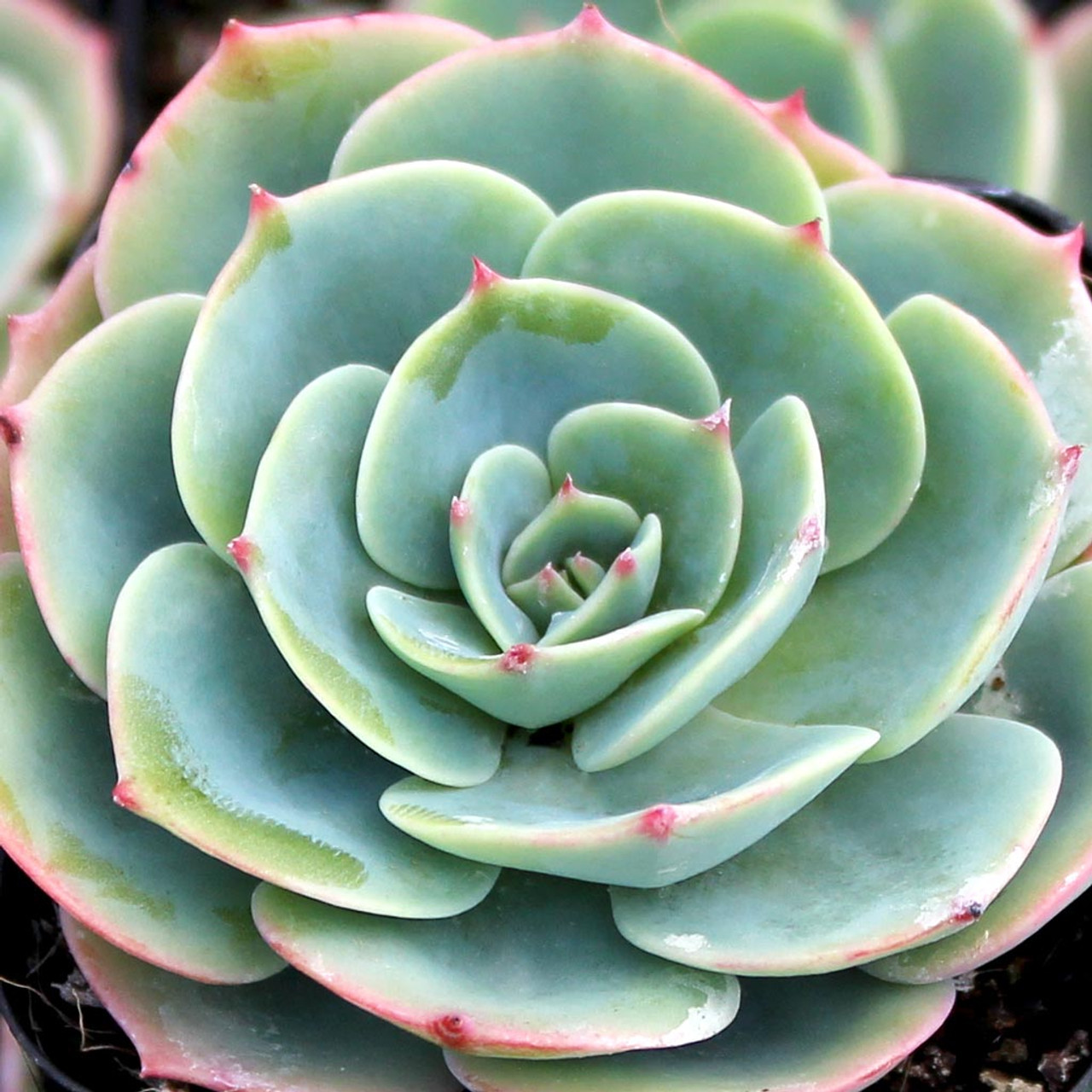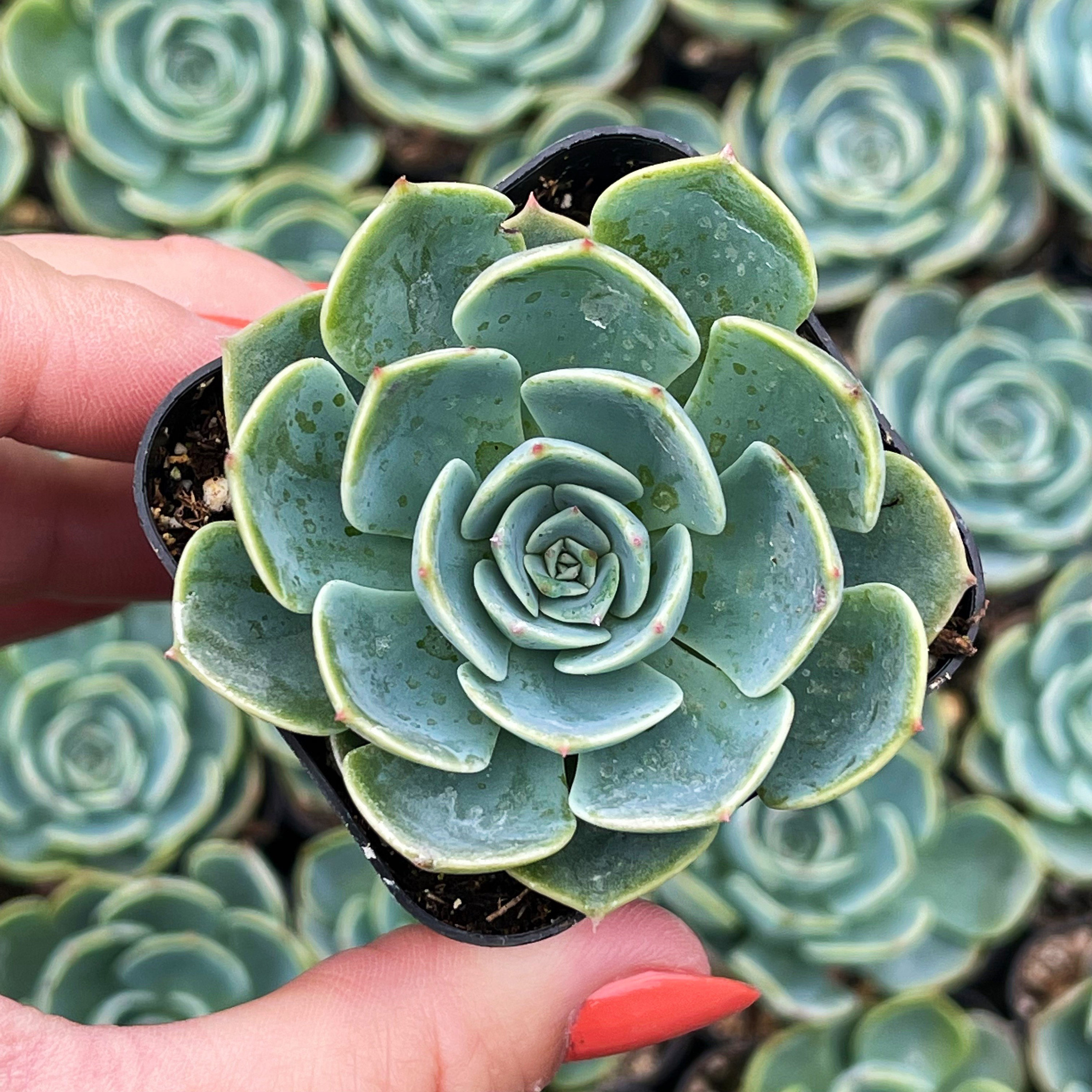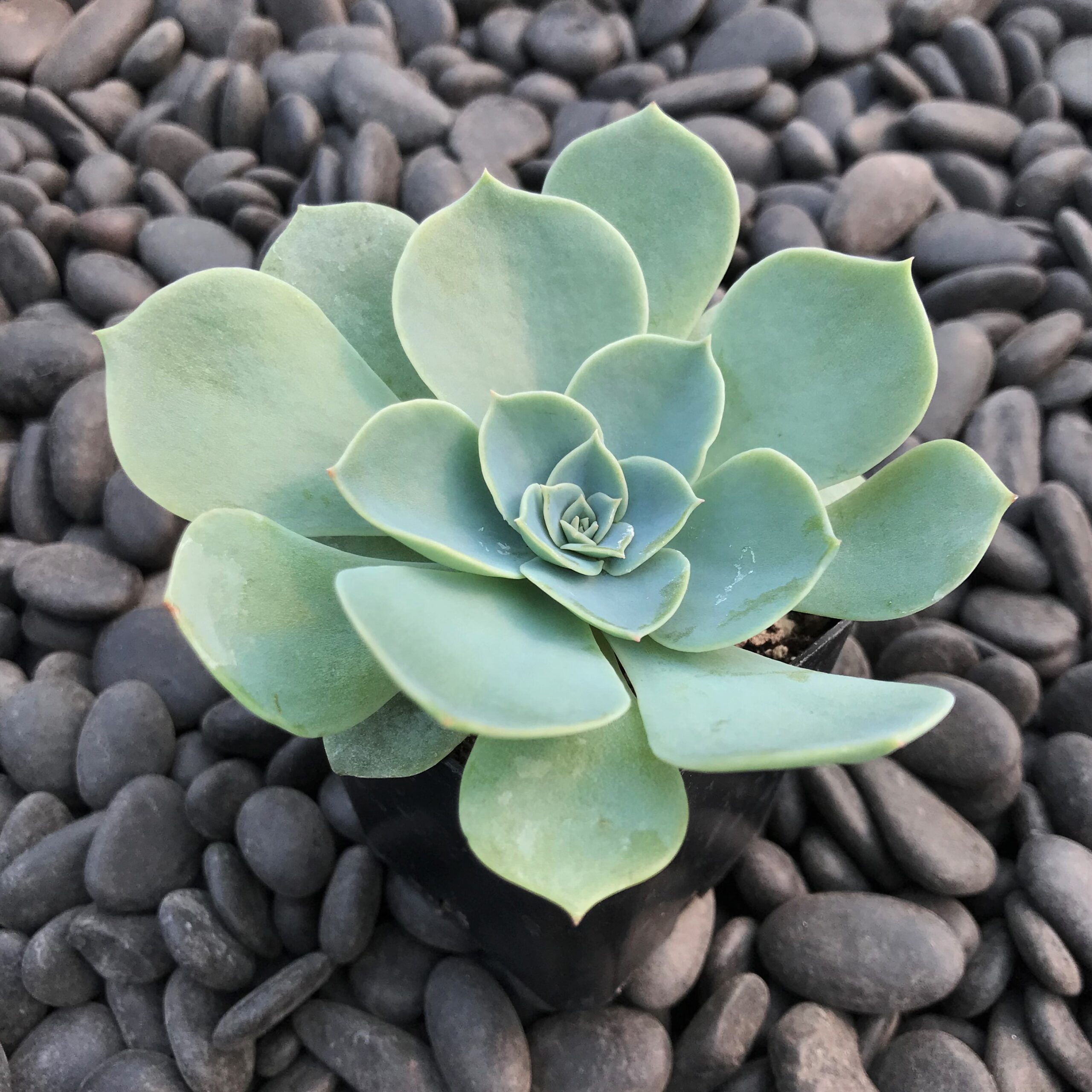“Blue Rose” is a popular type of Echeveria that features large, flat leaves in a powder blue hue, with a blush hue near the edges. As the plant matures, it tends to form clusters of rosettes.
Table of Contents
Care and Propagation Information
The Blue Rose Echeveria is a favorite for succulent lovers, and is one of the most recognizable varieties of Echeveria. It is a hybrid of two Echeveria varieties, Echeveria glauca and Echeveria metallica, and is one of the oldest documented varieties of Echeveria.
As the “Blue Rose” cactus develops, the lower, older leaves wither away, replaced by healthy, newer growth at the top. A fine coating of powder on the leaves guards the succulent from sun damage.
Watering
“Blue Rose” has the same watering requirements as most succulents. It is best to use the “soak and dry” method, letting the soil dry out completely between waterings.
Where to Plant
If you live in a climate that experiences temperatures lower than 30° F (-1.1° C), it is advisable to grow “Blue Rose” in a pot that can be taken inside. This succulent does best when it is placed in an area that receives partial sunlight and partial shade.
How to Propagate Echeveria imbricata “Blue Rose”
Growing a Blue Rose may be challenging since it takes time for it to mature. To have the most successful outcome, you should try propagating the leaves or smaller sections of the plant.
Leaves
To propagate Echeveria imbricata “Blue Rose”, carefully remove a leaf from the stem of the mother plant. Make sure that no part of the leaf is left on the stem, as this could decrease the chances of successful propagation.
Let the leaf sit and air dry for several days until a callous forms at the end. Then put the leaf in a pot with soil that drains well and water it only when the soil is completely dry.
Offsets
The offsets of “Blue Rose” can be propagated by removing them from the base of the plant and allowing them to dry for a period of one or two days before replanting.
Care and Propagation Information
General Care for Echeveria imbricata “Blue Rose”
As the “Blue Rose” cactus develops, the lower, older leaves wither away, replaced by healthy, newer growth at the top. A fine coating of powder on the leaves guards the succulent from sun damage.
Watering
“Blue Rose” has the same watering requirements as most succulents. It is best to use the “soak and dry” method, letting the soil dry out completely between waterings.
Where to Plant
If you live in a climate that experiences temperatures lower than 30° F (-1.1° C), it is advisable to grow “Blue Rose” in a pot that can be taken inside. This succulent does best when it is placed in an area that receives partial sunlight and partial shade.
How to Propagate Echeveria imbricata “Blue Rose”
Growing a Blue Rose may be challenging since it takes time for it to mature. To have the most successful outcome, you should try propagating the leaves or smaller sections of the plant.
Leaves
To propagate Echeveria imbricata “Blue Rose”, carefully remove a leaf from the stem of the mother plant. Make sure that no part of the leaf is left on the stem, as this could decrease the chances of successful propagation.
Let the leaf sit and air dry for several days until a callous forms at the end. Then put the leaf in a pot with soil that drains well and water it only when the soil is completely dry.
Offsets
The offsets of “Blue Rose” can be propagated by removing them from the base of the plant and allowing them to dry for a period of one or two days before replanting.
FAQ
How do you care for Echeveria Imbricata Blue Rose?
For succulents in my sunny inland garden, the best sun exposure is mostly morning sun with some afternoon sun, about once a week. This allows the plants to get enough of the sunlight they need, while avoiding too much of the intense rays, and allows water in the soil to evaporate quickly.
What to do if succulent is overwatered?
Wait a few days before watering again.
How do you take care of blue roses?
To keep blue roses looking beautiful, maintain their environment by keeping them in a cool, dimly lit area and avoid putting them in water. Ensure they are at room temperature and away from direct sunlight to preserve their elegance.
How long does it take a succulent to rehydrate?
Wait 4 days and water the succulent again. You may not see an immediate change in the leaves, but usually the succulent will appear more plump after this period of time. The cutting should have rooted by then as well.
How much water does a blue rose need?
This plant should only be watered when the soil has become completely dry. If the soil is still damp, it may be a sign that the plant has already been watered too much. When you do water, give the plant a thorough soak and allow the soil to dry completely before watering again.



